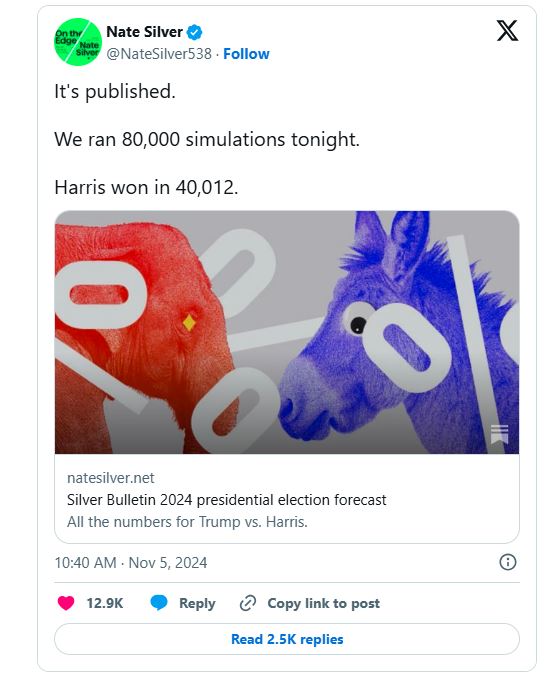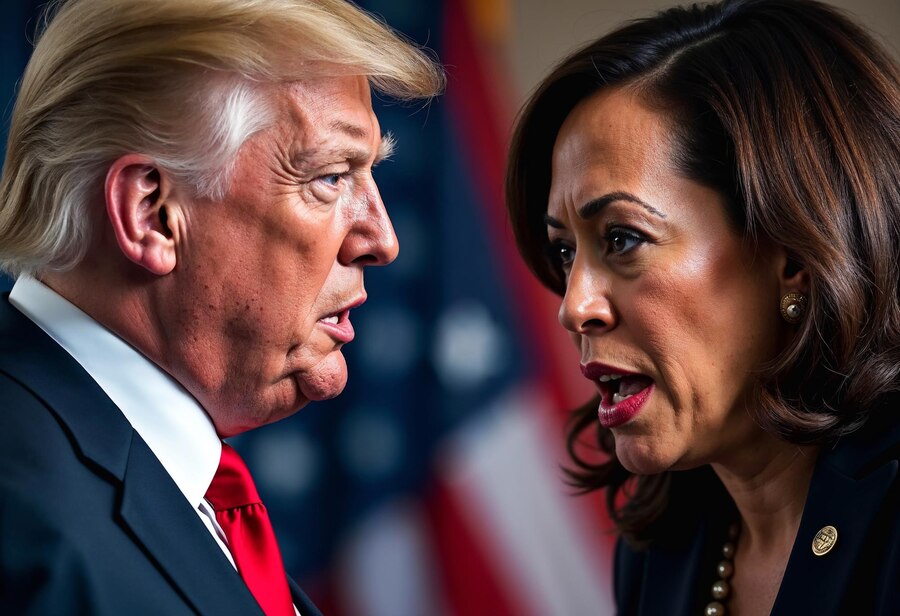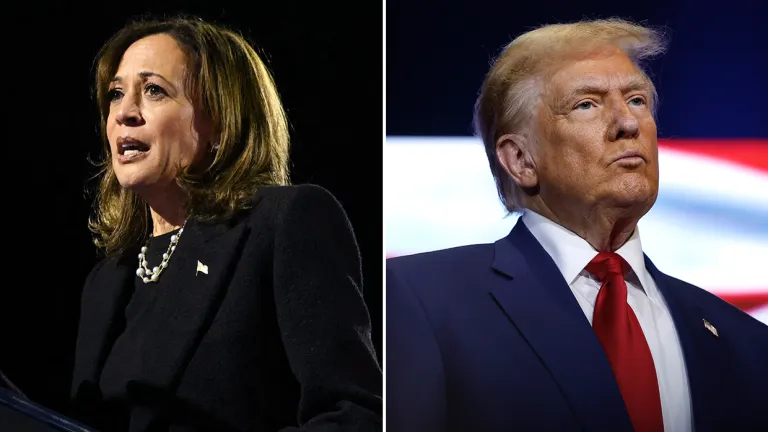With the 2024 U.S. presidential election on the horizon, political enthusiasts and everyday voters alike are wondering: who is likely to claim the presidency? As former President Donald Trump and Vice President Kamala Harris emerge as front-runners, analysts, pollsters, and experts are diving into data to forecast what might unfold. Let’s break down the key analyzes, current polls, and election mechanics, and examine the potential for a tie in the electoral vote.
Analysis by Key Experts
Nate Silver’s Forecast

Nate Silver, the renowned data analyst and founder of FiveThirtyEight, has built a reputation for his election forecasts. Silver’s predictions use a mix of polling data, historical voting patterns, and statistical models. This year, he’s following polling trends and examining factors like voter turnout and party approval. Silver’s latest forecast points to a competitive race, with tight polling numbers in battleground states like Pennsylvania, Wisconsin, and Arizona. According to Silver, Trump’s familiarity and solid Republican base contrast with Harris’s appeal among younger voters and diverse communities, creating an intriguing and highly unpredictable race.
Allan Lichtman’s 2024 Prediction

Allan Lichtman is famous for his “Keys to the White House” model, which accurately predicted every presidential winner since 1984. His model does not rely on polling but instead uses a checklist of 13 criteria, or “keys,” that cover incumbency, the economy, and social issues. Lichtman’s model indicates that the race might be tight; economic factors and current social unrest could swing the vote either way. His initial indicators suggest a small advantage for the Democrats if the current administration maintains strong economic growth. However, Trump’s history of defying traditional metrics keeps his chances alive.
So, Who Is Projected to Win the 2024 Presidential Election?

Combining the insights from Nate Silver, Allan Lichtman, and other political analysts gives us a mixed projection. The Republican base remains loyal to Trump, but Harris could energize younger voters and first-time voters, groups Democrats heavily rely on. Key issues, like the economy, healthcare, and foreign policy, will heavily influence voters, and each candidate is expected to emphasize their strengths in these areas. With an electorate that’s deeply divided on issues like inflation and social justice, it’s clear that even small shifts in voter turnout could impact the final result. Ultimately, projections give Harris a slight advantage, but the race remains tight, with many factors yet to come into play.
Who Is Winning in the Polls Now?
Current polling data reveals a near tie between Harris and Trump. In crucial battleground states, polls show a mix of outcomes, with each candidate having slight advantages in specific regions. For instance, Trump leads among older voters and white working-class demographics, especially in rural areas. Harris, on the other hand, has strong support among younger voters, women, and people of color, especially in urban settings. Polling trends will likely shift closer to election day, as candidates ramp up campaigns and focus on swing states like Florida, Michigan, and Georgia.
What If the Election Results in a Tie?
In the event of a tie, where both candidates earn 269 electoral votes, the election would be decided by Congress, according to the 12th Amendment. If this happens, the House of Representatives elects the President, while the Senate elects the Vice President. Historically, elections like those in 1800 and 1824 had close or contested results, but a tie in modern times would be historic. A tied result could lead to heightened tension and uncertainty, possibly sparking debates about the efficacy of the electoral college system.
Procedure for the 2024 U.S. Election

The U.S. presidential election follows a structured process:
- Primaries and Caucuses: Candidates campaign through state primaries, securing delegates to represent them at national conventions.
- National Conventions: Both the Democratic and Republican parties formally nominate their candidates.
- Election Day: Citizens cast their votes on November 5, 2024.
- Electoral College: States submit their electoral votes based on the popular vote outcome. In December, electors meet to vote for President and Vice President.
- Certification and Inauguration: Congress counts electoral votes on January 6, 2025, and the new President is inaugurated on January 20. New voting procedures, especially around mail-in and absentee ballots, could impact election timelines.
Profile of Previous Candidates
Historically, repeat candidates have had mixed results. Trump, running again after a previous term, has experience and voter familiarity on his side. However, facing him are challenges that many second-time candidates have dealt with: rebuilding a fresh narrative while navigating past controversies. Harris, in contrast, has limited campaign history but stands as a historic figure who could draw in progressive and moderate voters. Each candidate’s approach mirrors that of predecessors: Trump’s bold and media-driven style contrasts with Harris’s focus on policy issues and grassroots engagement.
Conclusion
With insights from top analysts, close polling numbers, and high stakes in battleground states, the 2024 election is poised to be an incredibly tight race. Silver and Lichtman’s analyses highlight the unpredictability, showing that while Harris holds a slight edge, Trump’s loyal voter base shouldn’t be underestimated. As election day draws near, stay engaged, keep an eye on polling shifts, and make sure your voice is heard—because every vote will count in this historic showdown.

